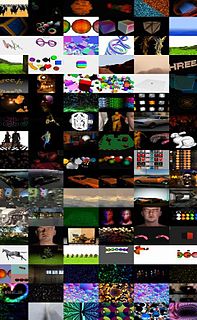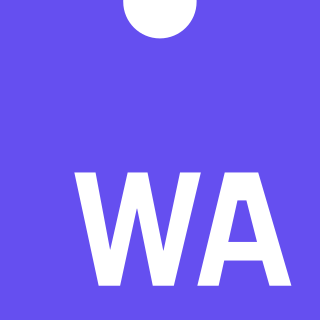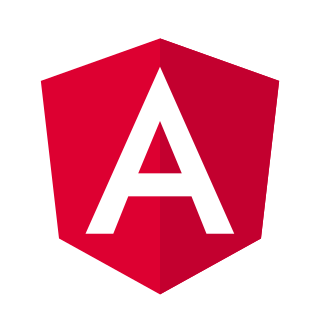Related Research Articles

Google Web Toolkit, or GWT Web Toolkit, is an open-source set of tools that allows web developers to create and maintain JavaScript front-end applications in Java. Other than a few native libraries, everything is Java source that can be built on any supported platform with the included GWT Ant build files. It is licensed under the Apache License 2.0.
Web development tools allow web developers to test and debug their code. They are different from website builders and integrated development environments (IDEs) in that they do not assist in the direct creation of a webpage, rather they are tools used for testing the user interface of a website or web application.
V8 is an open-source JavaScript engine developed by The Chromium Project for Google Chrome and Chromium web browsers. The project’s creator is Lars Bak. The first version of the V8 engine was released at the same time as the first version of Chrome: 2 September 2008. It has also been used on the server side, for example in Couchbase, and Node.js.

Node.js is an open-source, cross-platform, back-end JavaScript runtime environment that runs on the V8 engine and executes JavaScript code outside a web browser. Node.js lets developers use JavaScript to write command line tools and for server-side scripting—running scripts server-side to produce dynamic web page content before the page is sent to the user's web browser. Consequently, Node.js represents a "JavaScript everywhere" paradigm, unifying web-application development around a single programming language, rather than different languages for server-side and client-side scripts.
A browser speed test is a computer benchmark that scores the performance of a web browser, by measuring the browser's efficiency in completing a predefined list of tasks. In general the testing software is available online, located on a website, where different algorithms are loaded and performed in the browser client. Typical test tasks are rendering and animation, DOM transformations, string operations, mathematical calculations, sorting algorithms, graphic performance tests and memory instructions. Browser speed tests have been used during browser wars to prove superiority of specific web browsers. The popular Acid3 test is no particular speed test but checks browser conformity to web standards.
Dart is a programming language designed for client development, such as for the web and mobile apps. It is developed by Google and can also be used to build server and desktop applications.
Content Security Policy (CSP) is a computer security standard introduced to prevent cross-site scripting (XSS), clickjacking and other code injection attacks resulting from execution of malicious content in the trusted web page context. It is a Candidate Recommendation of the W3C working group on Web Application Security, widely supported by modern web browsers. CSP provides a standard method for website owners to declare approved origins of content that browsers should be allowed to load on that website—covered types are JavaScript, CSS, HTML frames, web workers, fonts, images, embeddable objects such as Java applets, ActiveX, audio and video files, and other HTML5 features.

Three.js is a cross-browser JavaScript library and application programming interface (API) used to create and display animated 3D computer graphics in a web browser using WebGL. The source code is hosted in a repository on GitHub.

PDF.js or pdf.js is a JavaScript library that renders Portable Document Format (PDF) files using the web standards-compliant HTML5 Canvas. The project is led by the Mozilla Foundation after Andreas Gal launched it in 2011.
Yeoman is an open source client-side scaffolding tool for web applications. Yeoman runs as a command-line interface written for Node.js and combines several functions into one place, such as generating a starter template, managing dependencies, running unit tests, providing a local development server, and optimizing production code for deployment.

Asynchronous module definition (AMD) is a specification for the programming language JavaScript. It defines an application programming interface (API) that defines code modules and their dependencies, and loads them asynchronously if desired. Implementations of AMD provide the following benefits:
asm.js is a subset of JavaScript designed to allow computer software written in languages such as C to be run as web applications while maintaining performance characteristics considerably better than standard JavaScript, which is the typical language used for such applications.

Ember.js is an open-source JavaScript web framework, utilizing a component-service pattern. It allows developers to create scalable single-page web applications by incorporating common idioms, best practices, and patterns from other single-page-app ecosystem patterns into the framework.
A headless browser is a web browser without a graphical user interface.

PhantomJS is a discontinued headless browser used for automating web page interaction. PhantomJS provides a JavaScript API enabling automated navigation, screenshots, user behavior and assertions making it a common tool used to run browser-based unit tests in a headless system like a continuous integration environment. PhantomJS is based on WebKit making it a similar browsing environment to Safari and Google Chrome. It is open-source software released under the BSD License.

WebAssembly is an open standard that defines a portable binary-code format for executable programs, and a corresponding textual assembly language, as well as interfaces for facilitating interactions between such programs and their host environment. The main goal of WebAssembly is to enable high-performance applications on web pages, but the format is designed to be executed and integrated in other environments as well, including standalone ones.
ContentTools is an open-source WYSIWYG editor for HTML content written in JavaScript/CoffeeScript by Anthony Blackshaw of Getme Limited.

A progressive web application (PWA) is a type of application software delivered through the web, built using common web technologies including HTML, CSS and JavaScript. It is intended to work on any platform that uses a standards-compliant browser, including both desktop and mobile devices.

Angular is a TypeScript-based open-source web application framework led by the Angular Team at Google and by a community of individuals and corporations. Angular is a complete rewrite from the same team that built AngularJS.

Next.js is an open-source React front-end development web framework created by Vercel that enables functionality such as server-side rendering and generating static websites for React based web applications. It is a production-ready framework that allows developers to quickly create static and dynamic JAMstack websites and is used widely by many large companies. Next.js is one of several recommended "toolchains" available when starting a new React app, all of which provide a layer of abstraction to aid in common tasks. Traditional React apps render all their content in the client-side browser, Next.js is used to extend this functionality to include applications rendered on the server side. The copyright and trademarks for Next.js are owned by Vercel. On July 27, 2020 Next.js version 9.5 was announced, adding new capabilities including incremental static regeneration, rewrites, and redirect support.
References
- ↑ "I am Addy Osmani, ask me anything". July 11, 2018.
- ↑ Zetlin, Minda (November 11, 2019). "Does Your Website Load Slowly? Google Chrome May Start Punishing You With a Label Warning Users About the Wait". Inc.com.
- ↑ Keizer, Gregg (November 12, 2019). "Google ponders shaming slow websites inside Chrome". Computerworld.
- ↑ "Chrome experimenting with 'back/forward cache' that speeds up web browsing". February 28, 2019.
- 1 2 "Amazon.com: Customer reviews: Learning JavaScript Design Patterns: A JavaScript and jQuery Developer's Guide". www.amazon.com.
- 1 2 "Meet Image Optimization, A New Smashing Book By Addy Osmani". Smashing Magazine. April 28, 2021.
- ↑ "Production Progressive Web Apps With JavaScript Frameworks (Google I/O '17)" – via www.youtube.com.
- ↑ "Discussion of I'm Addy Osmani, Ask Me Anything!". DEV Community.
- ↑ "Addy Osmani :: The Cost of JavaScript :: #PerfMatters Conference 2019" – via www.youtube.com.
- ↑ "Articles by: Addy Osmani | Creative Bloq". www.creativebloq.com.
- ↑ "Author Addy Osmani". Smashing Magazine. April 29, 2021.
- ↑ McNeal, Ryan. "New Chrome Badge System Will Identify And Warn Users About Slow Websites". Forbes.
- ↑ Cimpanu, Catalin. "Chrome and Firefox are borrowing from each other's performance features". ZDNet.
- ↑ "Facebook devs devise Hermes to push cross-platform JavaScript to godlike speeds". www.theregister.com.
- ↑ "Speed is now a landing page factor for Google Search and Ads | Web". Google Developers.
- ↑ "Web Vitals". web.dev.
- ↑ "Evaluating page experience for a better web".
- ↑ "Want better JavaScript performance? Google's tips for stopping the programming language from slowing Chrome". TechRepublic.
- ↑ Henshaw, Jon (August 8, 2019). "Chrome web browser now supports native lazy-loading". Marketing & Technology News.
- ↑ "Master Developers: Addy Osmani". Code Envato Tuts+.
- ↑ "Native image lazy-loading for the web". web.dev.
- ↑ "New Chrome Lazy Loading Feature Coming Soon". Search Engine Journal. April 8, 2019.
- ↑ "Addy Osmani on JavaScript, Debugging and Testing". InfoQ.
- ↑ "Google Chrome's Native Lazy Loading iFrames May Not Be So Great For Advertising". AdMonsters. May 16, 2019.
- ↑ "Automatically lazy-loading offscreen images & iframes for Lite mode users".
- ↑ "10 years of Speed in Chrome".
- ↑ Shankland, Stephen. "Chrome could get way faster at loading some websites in 2020 with a feature called bfcache". CNET.
- ↑ "Google Chrome Set to Make Navigation to Previously Visited Pages Faster". NDTV Gadgets 360.
- ↑ "[Update: Coming to Chrome 86] Going back and forward in Google Chrome will get a lot faster with bfcache". July 24, 2020.
- ↑ Leatherman, Zach. "Google Fonts is Adding font-display 🎉—zachleat.com". Zach Leatherman.
- ↑ "Speed at Scale: Web Performance Tips and Tricks from the Trenches (Google I/O '19)" – via www.youtube.com.
- ↑ Sev, Chris. "Google Fonts Now Supports font-display!". Scotch.
- ↑ Osmani, Addy. "We shipped font-display to Google Fonts!". addyosmani.com.
- ↑ Osmani, Addy (December 1, 2017). "A Pinterest Progressive Web App Performance Case Study". Medium.
- ↑ Osmani, Addy (December 24, 2017). "A Tinder Progressive Web App Performance Case Study". Medium.
- ↑ Osmani, Addy (November 8, 2018). "A Netflix Web Performance Case Study". Medium.
- ↑ "Shopping for speed on eBay.com". web.dev.
- ↑ "TodoMVC". todomvc.com.
- ↑ "Introduction - React Tutorial".
- ↑ "LiveView TodoMVC - Part 1: templates and events". DEV Community.
- ↑ "analogy - Web applications have "the todo list." What analogous program is there for systems programming?". Software Engineering Stack Exchange.
- ↑ "tastejs/todomvc". May 29, 2021 – via GitHub.
- ↑ "reduxjs/redux". GitHub.
- ↑ "Speedometer: Benchmark for Web App Responsiveness". June 2, 2014.
- ↑ Osmani, Addy; Bynens, Mathias (January 15, 2018). "Speedometer 2.0: A Benchmark for Modern Web App Responsiveness".
- ↑ "Generators | Yeoman". yeoman.io.
- ↑ "Google's New Web Starter Kit Is A Boilerplate For Multi-Screen Web Development".
- ↑ "Introducing New Tools for Polymer Development - SitePoint". www.sitepoint.com.
- ↑ Osmani, Addy (December 15, 2016). "Webpack Performance Budgets". Medium.
- ↑ "Production Progressive Web Apps with JavaScript Frameworks". CSS-Tricks. May 27, 2017.
- ↑ Osmani, Addy (July 6, 2015). "Introducing Material Design Lite". Medium.
- ↑ Maxwell, Tom (July 6, 2015). "Google releases Material Design Lite, a web framework for making Material Design-style websites".
- ↑ "Google Releases MDL To Help You Give Your Website That Material Design Feel". July 13, 2015.
- ↑ Swanner, Nate (July 6, 2015). "Google unveils Material Design Lite to help websites look more like Android apps". TNW | Google.
- ↑ "google/material-design-lite". May 30, 2021 – via GitHub.
- ↑ "Quicklink". getquick.link.
- ↑ "Google Releases Native Lazyload Plugin for WordPress". September 6, 2019.
- ↑ "Google Chrome 75 to support lazy loading by default". HEXUS.
- ↑ Events, White October. "Render - A new front-end conference from the organizers of jQuery UK". Render - A new front-end conference from the organizers of jQuery UK.
- ↑ "Review: Learning JavaScript Design Patterns". www.raymondcamden.com.
- ↑ Osmani, Addy (July 8, 2012). "Learning JavaScript Design Patterns: A JavaScript and jQuery Developer's Guide". "O'Reilly Media, Inc." – via Google Books.
- ↑ "Amazon.com: Customer reviews: Developing Backbone.js Applications: Building Better JavaScript Applications". www.amazon.com.
- ↑ "Addy Osmani". web.dev.
- ↑ Rocha, Zeno. "14 Habits of Highly Productive Developers". 14habits.com.
- ↑ "O'Reilly Web Platform Award Winners Announced: O'Reilly Fluent Conference, March 11 - 13, 2014, San Francisco, CA". conferences.oreilly.com.
- ↑ "Seek 10.0 (Digtial)". Issuu.
- 1 2 "React Open Source Awards - GitNation". osawards.com.